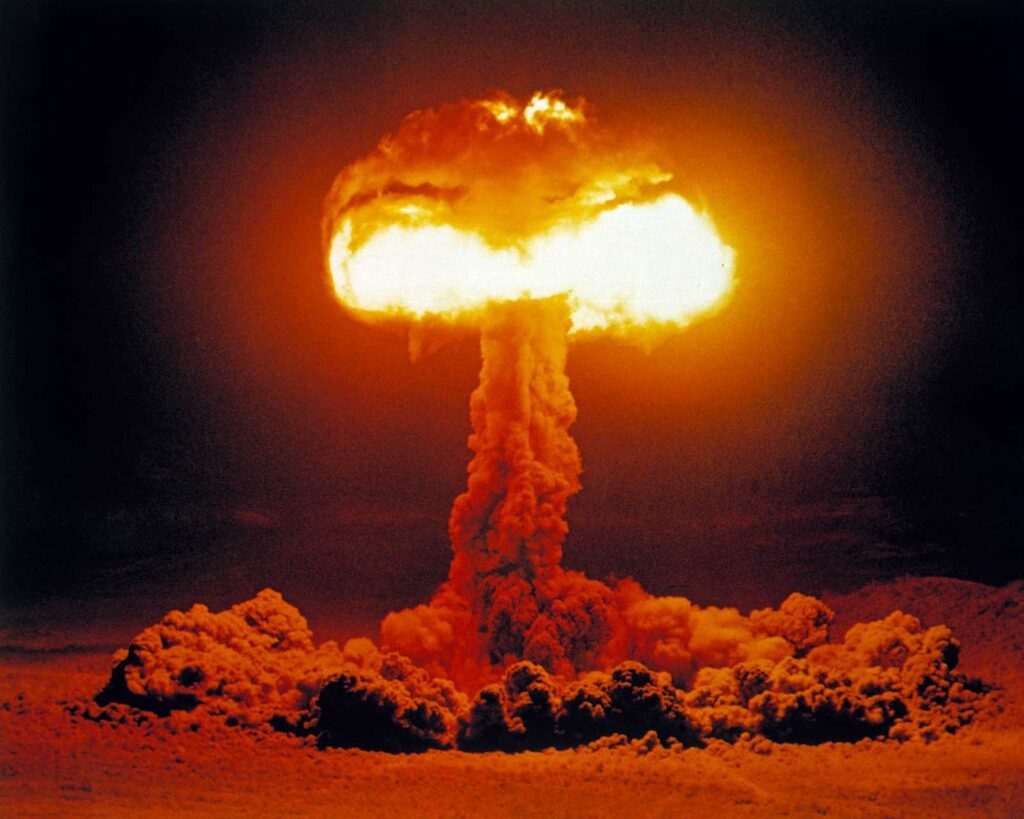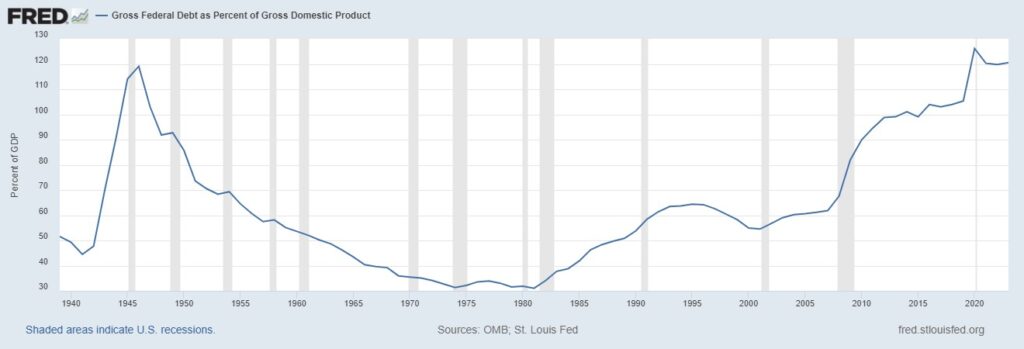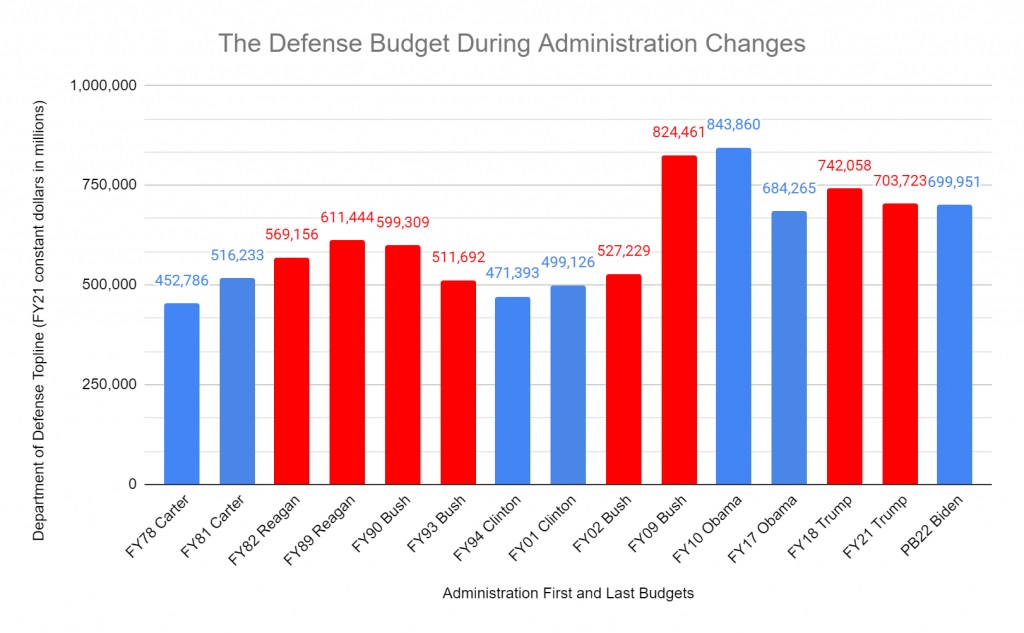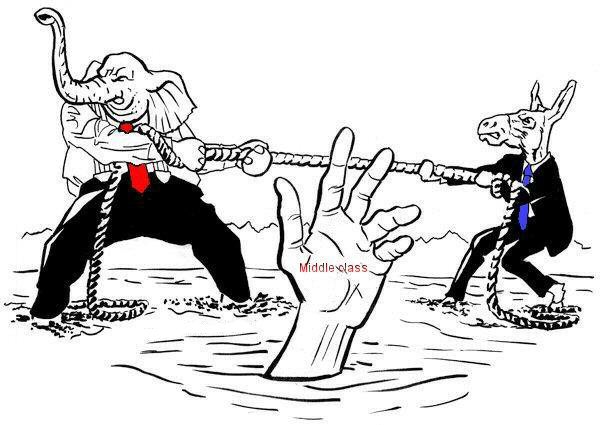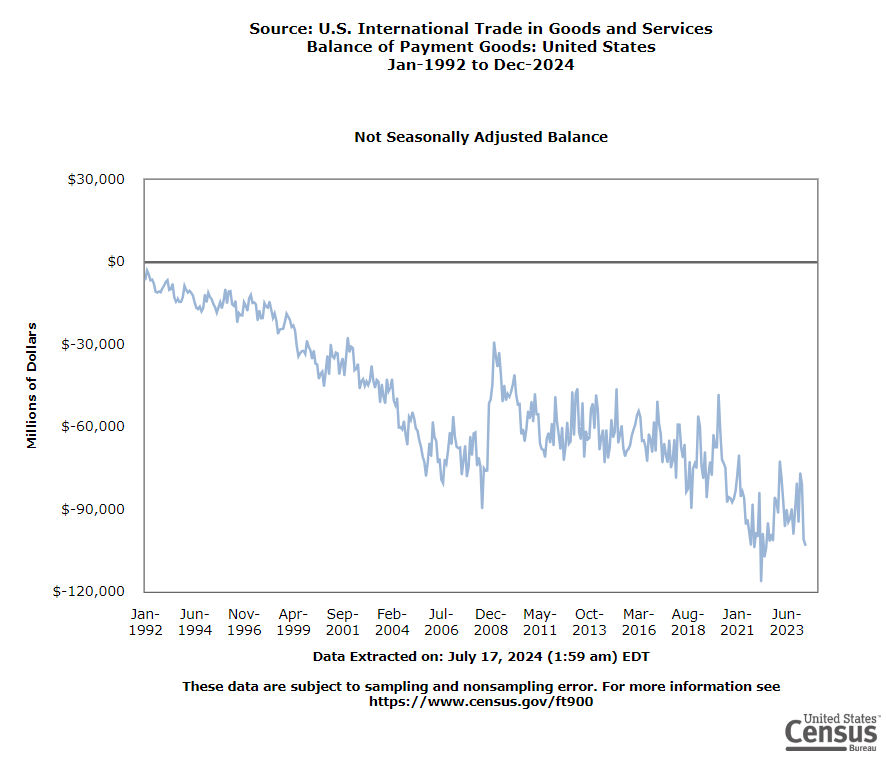Authorities
The Commission on the National Defense Strategy was established by Section 195 of the Fiscal Year 2022 National Defense Authorization Act (Public Law 117-81). It is composed by eight members from private civilian life who are recognized experts in matters relating to the national security of the United States.
Background
The national security strategies pursued by all administrations since Bill Clinton show remarkable continuity. The pattern suggests it is expected to continue unabated regardless of which Party controls the White House and/or Congress. Point in fact, the Commission’s 2024 report recommends the U.S. take additional draconian steps to prepare for a plausible all-out war with either China or Russia, or both. That posture aligns with the non-classified 2022 National Military Strategy of the United States and the Summary of the Fiscal Year 2024 National Defense Authorization Act.
Pertinent Facts and Conclusions
China’s rise can be traced directly to its manufacturing prowess and chronic trade surpluses, not domestic consumer demand. That implies that the day China morphs into an economy powered primarily by consumer spending it will become more self-reliant and largely impervious to U.S. sanctions. If and when that happens the Chinese government will receive higher revenue from a taxpayer population four times larger than the United States. At that point it may choose to spend even more than it does today on national defense, with all its implications. Accordingly, from the perspective of some influencers who believe the U.S. can survive and win a nuclear war, it is better to go for it now, before it loses its perceived superiority.
There is no denying that today the United States faces unprecedented competition. Indeed, unlike the Soviet Union in its heyday, which was a military but not an economic superpower, China is currently America’s only economic peer with a population larger than the entire Western Hemisphere, Europe, and Russia combined. In addition, the competition for natural resources from the Global South is expected to intensify over the next few decades as India, already the world’s most populous nation, overtakes Japan and Germany to become the world’s third largest economy and seeks to satisfy its needs. At that Europe, the U.S., Japan, China and India will have to go to the same watering holes, and they’ll all want priority. Clearly, to guarantee peace – and survival – in a fast-approaching era of ever more efficient and lethal weapons of mass destruction, a new international mechanism, complete with enforcement provisions, will have to be voluntarily created and deployed to allow equitable distribution of resources on a basis other than fiat currencies or sheer military power.
Key Points
The Commission acknowledges – and understates – that the consequences of an all-out war between the U.S. and China or Russia, or both, would be devastating. Indeed, by some estimates that would prevent agriculture, kill plants, upend food chains, trigger nuclear winter, all in just 72 minutes, and eventually wipe out at least 60% of humanity. The Commission does not dwell in depth into the possibility that other powers may also come to blows later (or perhaps sooner) this century, with similar consequences. Witness long-standing chronic tensions between India and Pakistan and India and China, to say nothing of the Middle East.
The Commission does recognize that the ballooning U.S. deficit poses national security risks. While that assessment agrees with the Congressional Budget Office’s Long-Term Budget Outlook, which projects that by 2054 the deficit will reach 8.5 percent of GDP and that the portion held by the public will rise to 166 percent of GDP, it’s just the tip of the iceberg. As of August, 2024 the U.S. accumulated debt exceeds $35 trillion, unprecedented in peacetime.
These sobering facts notwithstanding, the Commission nevertheless recommends a vast multiyear expansion in defense spending to support U.S. allies at war, expand defense-related industrial capacity, increase and accelerate military construction to expand and harden facilities in Asia, secure access to critical minerals, and invest in a digital and industrial workforce on a glide path commensurate with the U.S. national effort seen during the Cold War. To fund it, the Commission called for Congress to revoke or override the caps in the 2023 Fiscal Responsibility Act (H.R.3746), raise taxes, and reform entitlement spending. That has been partially heeded. H.R.3746 has simultaneously suspended and increased the federal debt limit through January 2, 2025 to accommodate the obligations issued during the suspension period.
For all intents and purposes, then, the Commission essentially envisions an environment of unrestrained defense spending that would grow at a rate relative to GDP commensurate with the pivotal years 1982-1991, the height of the Cold War. In addition, the U.S. would indefinitely pay for wars fought by allies; taxes would rise – no word on how they would be apportioned – and Social Security, Medicare, (and presumably) the Affordable Care Act would be curtailed as desired. However, the Commission does not analyze the social and civic consequences that might stem from that course of action. Furthermore, it neither rules out incurring additional massive deficits in order to expand output by the military-industrial complex, nor does it analyze the extent to which the markets might react to the government’s indefinite lack of fiscal discipline and unrestrained spending.
Perceived Flaws
The Commission’s approach is flawed on at least three fundamental points. Firstly, any strategy that incites or seeks a terminal nuclear war is by definition suicidal. It assumes that higher defense spending would deter Russia and China from defending their core interests, namely halting NATO’s eastward expansion and the reunification with Taiwan respectively. At best, all it would do is dramatically expand the existing forest of deployed ICBMs which is already more than capable of destroying life several times over. Worse, the Commission ignores the fact that both adversaries consider these core interests non-negotiable. In Russia’s case, it has already proved that it is willing to fight to prevent Ukraine from joining NATO and that President Putin has publicly stated the conditions under which Russia would resort to nuclear weapons. As for China, it has repeatedly declared that while it favors a peaceful reunification with Taiwan, its patience is not infinite and that force cannot be ruled out. In other words, we’re on a runaway train to World War III and there’s no failsafe mechanism to stop it.
Secondly, while the Commission categorizes America’s interests and speaks of the need to the defend them, it doesn’t specify what they are. This ambiguity makes it all but impossible to determine the extent to which they benefit America’s various income/social tiers, from half the population that cannot afford to buy a median-priced home anywhere in the country, to the richest 1% that hold more than half of stock and less than 5% of debt . Surely, since the Commission’s recommendations would potentially require new onerous sacrifices, the least it could do is describe in detail how they would be apportioned.
Thirdly, the Commission warns of the consequences should the U.S. cease to be a superpower. Since the U.S. already has the means to destroy the world as we know it, it’s difficult to imagine how it might be demoted. However, if being a superpower requires the ability to dominate everyone else ad infinitum despite having just 4.17% of the world’s population, then the Commission should explain how the U.S. could possibly subdue the other 95.83%.
That said, the Commission does have a valid point in that the U.S. must do all it can to prevent others, including China, from confining it to the exclusive club of former great powers such as Germany, the United Kingdom, France, and Japan, which lack domestic oil reserves to meet their needs. But prevention ought to be a peaceful process to ensure that the “cure”, which equates to nuclear war, is taken off the table. Needless to say, that would require time and intense negotiations. What is certain is that never before has the actual survival of homo sapiens been at stake.
Roots
Nervos belli, pecuniam infinitam (the sinews of war [are] unlimited money), declared Cicero in his Fifth Philippic. This remains an indisputable truth. Richer countries invariably maintain vast military-industrial complexes and fight more wars, preemptive and aggressive. Today’s nuclear-armed countries include four that were not independent in 1946 – India, Pakistan, Israel and North Korea, and the probability of a nuclear war between the U.S. and Russia or China, or both, is higher than at any time since the 1962 Cuban missile crisis. What’s more, since the relationships between individual or groups of nations change over time, there’s no telling how they will evolve. Case in point both Germany and Japan were enemies of the U.S. in World War II, and now they’re allies. And the Soviet Union (Russia) an ally at that time, has become a de facto enemy. On that vein, it’s impossible to say how the relationship between Russia and China might morph, particularly in the context of their relationship with India. As a result, the only real pathway to survival – disarmament – is presently not viable. For example, Russia might feel insecure with respect to not just NATO but China. After all, Russia’s vast, practically empty hinterland east of the Urals, adjacent to China, and Europe’s high density and lack of natural resources are valid reasons for Russia not to disarm. Similarly, the U.S., China, India, Pakistan, Israel and North Korea all have their own reasons not to so either.
Consequences
The world cannot rely on treaties, however formal, to prevent a nuclear catastrophe. As we have seen, nations can unilaterally withdraw from them at will. The reason for this is that – short of war itself – there is no mechanism to compel nations not to withdraw. In short, prevention relies on words worth only the paper they’re written on. That’s hardly a reliable mechanism to guarantee mankind’s survival.
Logical Path
Since abundant money is an essential prerequisite to support military industrial complexes capable of producing these dreaded weapons, one way to freeze, reduce, and eventually even destroy them is to introduce a truly neutral mechanism that determines and regulates the exchange rates of all national currencies. That would empower the Global South and dilute the Northern Hemisphere’s undue dominance in a way consistent with the unrelenting need to fight climate change. The specific mechanism is described here.
